Since the U.S. Federal Communications Commission (FCC) limits Wi-Fi transmitter power, it’s often necessary to increase the range of Wi-Fi signals using some signal boosting/extending technology. But transmit power is only half of the equation. Wi-Fi connections are always bidirectional and symmetrical. When working to extend Wi-Fi signals, the bidirectional nature of the connection is an important factor. There are several options for extending Wi-Fi signals, including hardware and network architecture options. This FAQ briefly reviews several of them, including wireless repeaters, range extenders, and network extenders. It looks at uses for band steering and Wi-Fi mesh networks and closes with using Wi-Fi heat maps for more effective network planning and deployment.
Wireless repeaters are the simplest solution. They are just signal repeaters that rebroadcast the Wi-Fi signal to a finite localized area. The signal is rebroadcast on the same wireless channel as used by the router but has increased latency.
Wireless range extenders also receive the signal from the main router and rebroadcast it. Unlike wireless repeaters that rebroadcast on the same channel as the original signal, range extenders can rebroadcast on a different channel if that provides superior signal coverage. With wireless repeaters and range extenders, incoming signal strength can be challenging. A Wi-Fi network extender can solve issues related to insufficient signal strength.
Wi-Fi network extenders provide the most consistent and reliable high-speed Wi-Fi connections. Unlike repeaters or range extenders that rebroadcast existing Wi-Fi signals, a network extender connects directly with the main router using a coax cable. The connection is often made using Multimedia over Coax (MoCA) 2.5 technology to extend the router’s signal throughout the building’s existing coax cabling, to bring an 802.11ax Wi-Fi signal to areas that can’t be reached with the existing router or range extenders. MoCA 2.5 is capable of up to 2.5 Gbps actual throughputs and is backward interoperable with MoCA 2.0 and MoCA 1.1.
Wi-Fi network extenders can be used in two ways. The receiving devices at the far end of the extender, such as televisions, can connect directly to the coax cable and receive data. Or a second (or third) Wi-Fi router can connect to the coax cable and form additional wireless Wi-Fi networks, all connected back to the main router for connection with the internet.
Band steering
Dual-band Wi-Fi devices use band steering to optimize bandwidth use. Generally, the 5 GHz band is the less-congested part of the network. It’s not an official Wi-Fi standard, but it’s an increasingly common technique. As each device connects to the network, the router determines if it is a dual-band device that can connect to either the 2.4 GHz or the 5 GHz band. If it is dual-band, the router will push the device to use the 5 GHz band and block it from connecting to the 2.4 GHz band. Band steering ensures that devices such as televisions or mobile phones can use the 5 GHz band to achieve peak performance. That prevents the 5 GHz-capable devices from being slowed by older 802.11b/g devices.
Band steering implementations continuously analyze the performance of the connection. When there’s a strong signal, the client connects using the 5 GHz band to the access point. When the access point is further away, or obstacles attenuate the signal, the client automatically switches to the 2.4 GHz bands less affected by the obstacles (Figure 1).
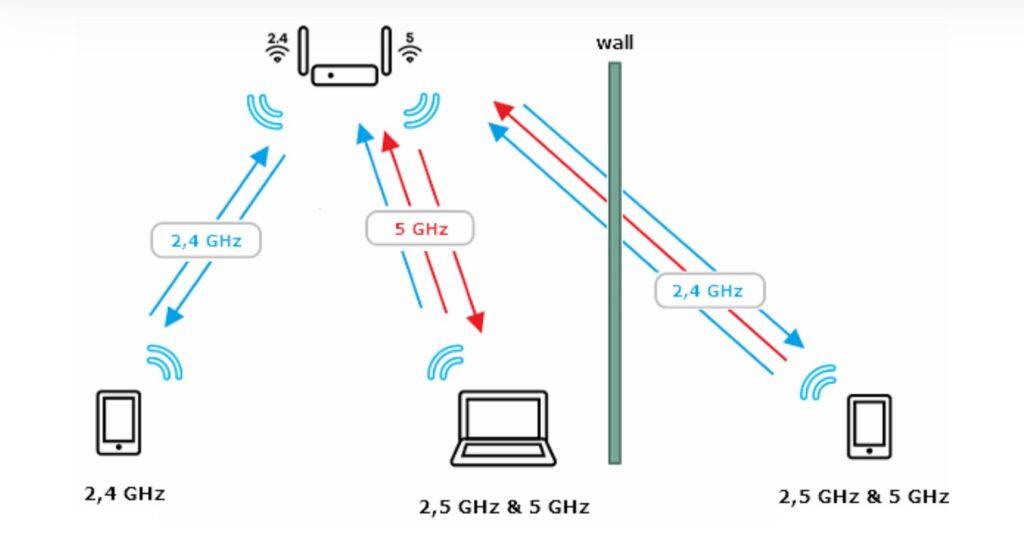
Operation in the 5 GHz band has advantages: More channels are in the 5 GHz range, and it can reduce inter-channel interference. The 5 GHz band has channel widths up to 80 MHz, significantly increasing data rates for 5 GHz capable devices. The maximum connection bandwidth is only 72 Mbit/s for 2.4 GHz but increases to 433 Mbit/s with an optimal 5 GHz connection.
Some band steering implementations include dynamic control capabilities. For example, if a smartphone initially connects to the 5 GHz band, but the user walks away from the router with dynamic control capability, and the signal weakens, the phone will be switched to the 2.4 GHz band if it has a better signal. And if the user moves back into the 5 GHz range, the phone will automatically be reconnected to the faster 5 GHz band.
Wi-Fi Mesh Networks
Wi-Fi mesh networks, or whole-home Wi-Fi systems, are another way to address uneven signal distribution. A single router is replaced by a group of routers in a mesh network. Those individual routers are called ‘points’ or ‘nodes’ and act as a single Wi-Fi network that connects to the internet through the main router. Traditional Wi-Fi networks use a single router to create a centralized access point. Wi-Fi mesh networks link two or more points, with one acting as the main router and the others being satellite connections getting internet access through the main router and rebroadcasting it to nearby devices. The main router and the points act as a single network sharing the same SSID and password (Figure 3).
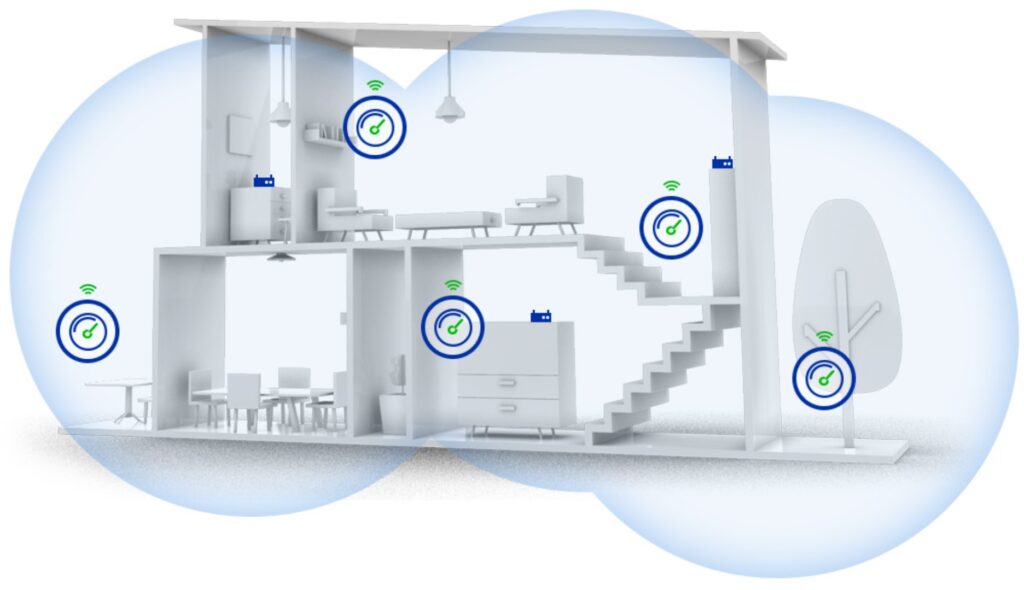
The main router and the points provide dispersed sources of the Wi-Fi signal. In contrast with range extenders, they all share the same network identification enabling users to roam from room to room without reconnecting to the network or switching to a new network. In the case of a large building, additional points can be added as needed to extend the Wi-Fi coverage. Benefits of Wi-Fi mesh networks include:
Flexible coverage: Additional points can be added to get better coverage in hard-to-cover areas like hallways and near walls for outdoor coverage or over large properties, including more than one building.
Direct path: All of the points are connected, enabling data to take the most efficient path to the main router, maximizing network performance.
Self-healing: In an appropriately designed mesh, communication can be rerouted through another point if one point goes down. The only ‘single-point-of-failure’ is the main router, the loss of which will take down the entire network.
Heat maps
The range of a Wi-Fi connection is affected by several factors, including the distance away from the router and attenuation caused by walls, floors, furniture, and other obstacles in indoor environments. Since the thickness and building materials of walls and floors can vary widely, a direct calculation of signal attenuation can be impossible, especially in large buildings such as apartment complexes.
Instead of estimating the various attenuation factors and calculating an estimated signal value for each location, a more direct, accurate, and simpler solution is to measure the signal at each place of interest in the building. The measurements of signal strength can be used to create a Wi-Fi signal heat map that provides a visual representation of the signal quality at different places. For example, the spectrum of colors representing signal strength can range from dark green for very good signal strength to red for a very weak signal (Figure 2).
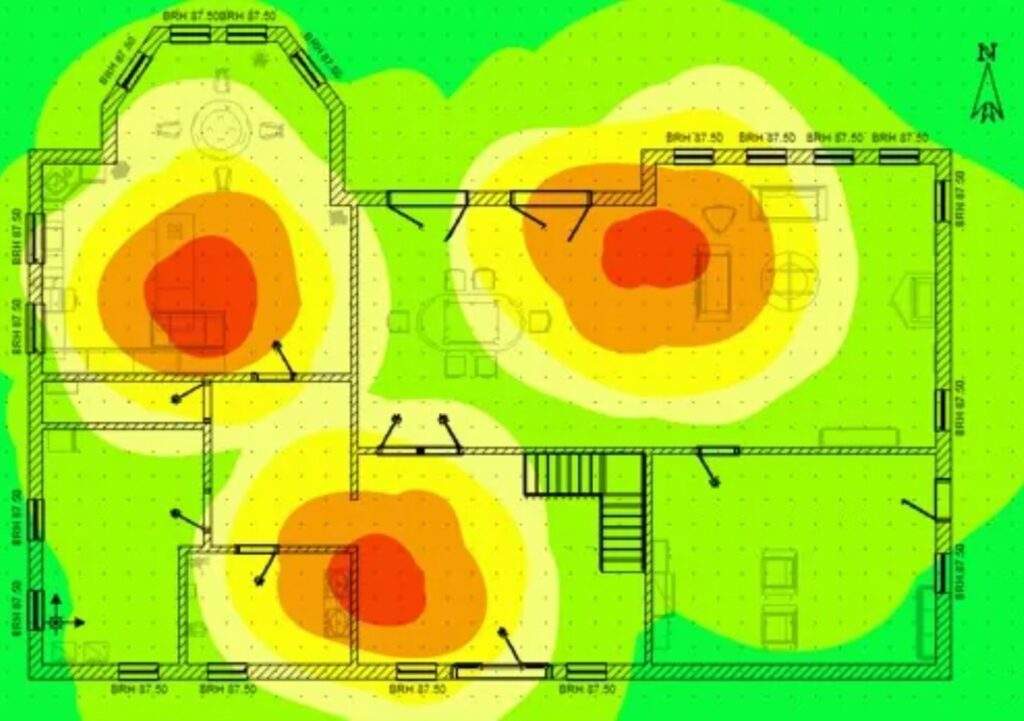
Wi-Fi heat maps can serve a variety of needs:
- Identify signal dead zones
- Help eliminate low bandwidth areas
- Simplify placement of routers, repeaters, and other equipment to optimize network performance without including redundant or unnecessary resources.
- Provide reports for network administrators to use for network planning
Summary
The transmit power of Wi-Fi signals is limited by FCC regulations making it often necessary to use various means to boost the signal and extend the range of the network. Network engineers can expand the reach of Wi-Fi networks using wireless repeaters, range extenders, and network extenders. Band steering and Wi-Fi mesh network architectures are more complex but often provide more cost-effective and better coverage. The bidirectional and symmetrical nature of Wi-Fi networks needs to be considered when expanding coverage. Wi-Fi heat maps can be used to identify the varying signal strengths throughout a building for more effective network planning and deployment.
References
Band Steering, Keenetic
Best Wi-Fi Heat Mapping Tools, SolarWinds Worldwide
What is a mesh Wi-Fi router, and do you need one?, Tom’s Guide
What Is Whole Home Wi-Fi and Mesh Wi-Fi?, Linksys

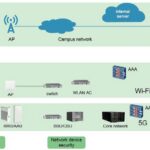

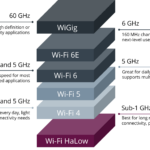

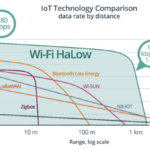
Leave a Reply